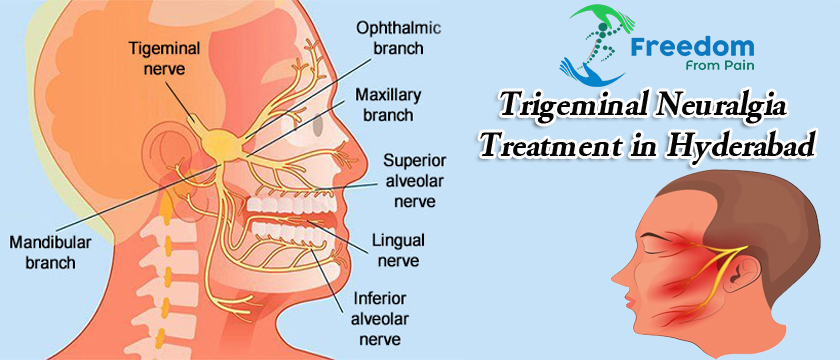Trigeminal neuralgia is a chronic pain condition that affects the trigeminal nerve, which carries sensation from your face to your brain. If you have trigeminal neuralgia, even mild stimulation of your face — such as from brushing your teeth or putting on makeup — may trigger a jolt of excruciating pain.
You may initially experience short, mild attacks. But trigeminal neuralgia can progress and cause longer, more-frequent bouts of searing pain. Trigeminal neuralgia affects women more often than men, and it’s more likely to occur in people who are older than 50.
Trigeminal neuralgia is treated on an outpatient basis, unless neurosurgical intervention is required. Management of this condition must be tailored individually, based on the patient’s age and general condition.
Symptoms
Trigeminal neuralgia symptoms may include one or more of these patterns:
- Episodes of severe, shooting or jabbing pain that may feel like an electric shock
- Spontaneous attacks of pain or attacks triggered by things such as touching the face, chewing, speaking or brushing teeth
- Bouts of pain lasting from a few seconds to several minutes
- Episodes of several attacks lasting days, weeks, months or longer — some people have periods when they experience no pain
- Constant aching, burning feeling that may occur before it evolves into the spasm-like pain of trigeminal neuralgia
- Pain in areas supplied by the trigeminal nerve, including the cheek, jaw, teeth, gums, lips, or less often the eye and forehead
- Pain affecting one side of the face at a time, though may rarely affect both sides of the face
- Pain focused in one spot or spread in a wider pattern
- Attacks that become more frequent and intense over time
There are several effective ways to alleviate the pain, including a variety of medications.
- Carbamazepine, an anticonvulsant drug, is the most common medication that doctors use to treat trigeminal neuralgia. In the early stages of the disease, carbamazepine controls pain for most people. When a patient shows no relief from this medication, a physician has cause to doubt whether trigeminal neuralgia is present. However, the effectiveness of carbamazepine decreases over time. Possible side effects include dizziness, double vision, drowsiness and nausea.
- Baclofen is a muscle relaxant. Its effectiveness may increase when it is used with either carbamazepine or phenytoin. Possible side effects include confusion, depression and drowsiness.
- Phenytoin, an anticonvulsant medication, was the first medication used to treat trigeminal neuralgia. Possible side effects include gum overgrowth, balance disturbances and drowsiness.
- Oxcarbazepine, a newer medication, has been used more recently as the first line of treatment. It is structurally related to carbamazepine and may be preferred because it generally has fewer side effects. Possible side effects include dizziness and double vision.


